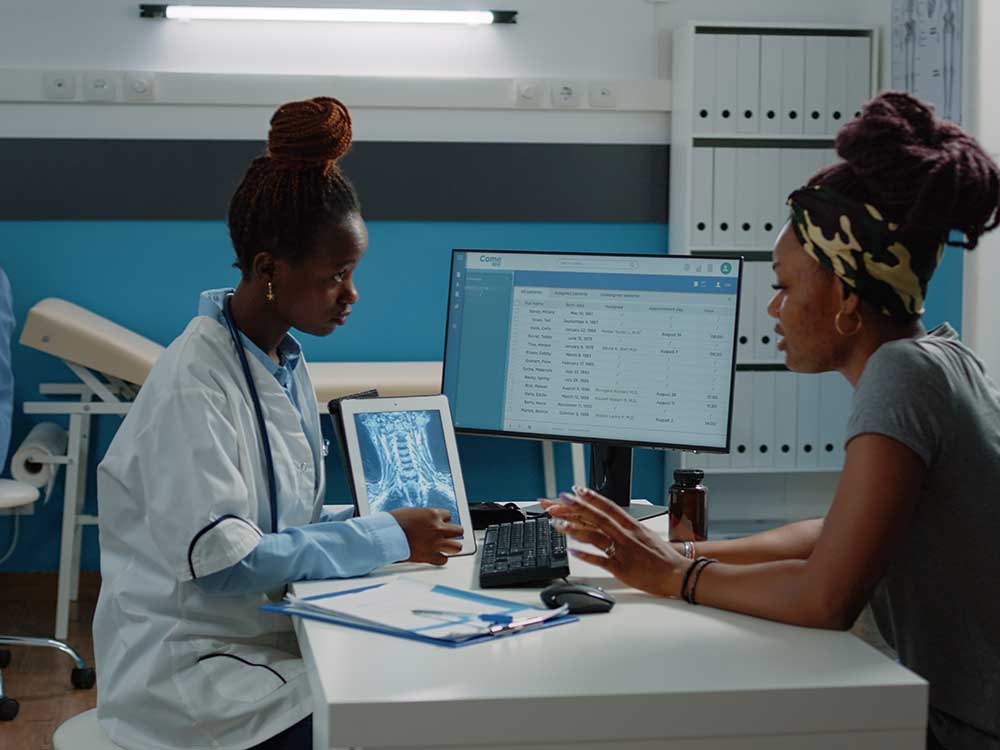Finest Practices in Medical Management for Improving Effectiveness and Lowering Prices
In the ever-evolving landscape of health care, the pursuit of ideal methods in clinical administration is paramount for enhancing efficiency and curbing expenses. By incorporating sophisticated technologies such as digital health documents and telemedicine, medical care companies can improve operations and improve patient care. Nevertheless, modern technology alone is not a cure all; optimizing source allotment and cultivating joint communication among care groups are similarly crucial (medical administration). As companies aim to stabilize top quality and expense, what strategies should be focused on to attain these dual goals? The response to these concerns hold the secret to a much more lasting health care system.
Leveraging Advanced Technology
The combination of electronic options right into medical care systems has transformed the means centers run, streamlining processes and boosting patient care. By centralizing client information, EHRs eliminate the demand for cumbersome documentation and promote smooth interaction amongst healthcare providers.
Telemedicine is another technical innovation that has reinvented person communication. It uses ease for both clients and healthcare specialists by allowing remote assessments, which can lower the requirement for in-person check outs and optimize consultation organizing. Additionally, telehealth platforms can expand health care accessibility to rural or underserved locations, bridging spaces in care delivery.
Furthermore, using Expert system (AI) and device knowing is coming to be increasingly prevalent in predictive analytics, enabling very early detection of potential wellness concerns and even more enlightened decision-making. These modern technologies, when incorporated effectively, can improve diagnostic precision and individualize patient therapy strategies, ultimately causing improved healthcare end results and functional effectiveness.
Optimizing Resource Appropriation
Reliable resource allowance is essential for optimizing the efficiency of clinical management. By strategically handling sources such as employees, equipment, and finances, health care facilities can considerably improve their functional efficiency, enhance client outcomes, and lower unneeded expenditures. The primary step in optimizing resource allowance entails conducting a comprehensive analysis of current assets and identifying areas where resources may be underutilized or overextended. This analysis needs to be data-driven, using metrics and analytics to educate decision-making processes.
Prioritizing resource allotment based on patient needs and solution needs is essential. This entails lining up resources with high-demand locations, such as emergency care or specialized therapies, to make sure prompt and reliable person treatment. Applying adaptable staffing designs can likewise maximize labor resources by changing personnel allotment in action to fluctuating individual quantities. Furthermore, embracing telemedicine and various other technical solutions can reduce physical source restrictions by using alternate avenues for patient-provider interactions.
Funds must be carefully kept track of and assigned with critical foresight to support both short-term operational demands and long-lasting institutional goals. This consists of investing in training programs that enhance personnel expertises and taking on energy-efficient practices that decrease operational expenses (medical administration). Eventually, a maximized resource allotment strategy fosters a lasting medical care environment that is receptive, reliable, and financially sensible
Streamlining Workflow Processes
When healthcare facilities goal to enhance functional efficiency, simplifying operations processes comes to be my explanation a crucial emphasis. Effective operations lessen redundancy, get rid of unnecessary steps, and enhance control among medical care experts. This method not just increases solution distribution but also enhances the top quality of patient treatment.

Next, technology integration plays a substantial function in improving process. Executing digital health records (EHRs) and computerized physician order access (CPOE) systems reduces documents, minimizes human mistake, and makes certain information comes to all relevant workers. In addition, leveraging telemedicine systems can simplify patient examinations and follow-ups, decreasing the pressure on physical infrastructure.

Ultimately, structured operations cause set you back decreases and improved client contentment, promoting a much more sustainable medical care atmosphere.
Enhancing Information Monitoring
Structure upon structured workflows, enhancing information monitoring comes to be an important component in progressing medical care administration. Efficient data management systems are essential for preserving accurate person documents, boosting decision-making, and guaranteeing compliance with regulatory standards. By carrying out robust information administration solutions, health care centers can boost the quality of individual treatment while at the same time minimizing operational expenses.
One secret element of enhancing information management is the combination of sophisticated electronic health and wellness document (EHR) systems. These systems help with the smooth exchange of individual details throughout different departments, lowering replication of tests and lessening errors. A well-designed EHR system supports information analytics, enabling doctor to identify fads and make informed choices relating to person care.
Furthermore, securing patient data is extremely important. Adopting thorough cybersecurity procedures, consisting of security and normal audits, makes sure the integrity and discretion of delicate info. This not just shields patients but additionally preserves the organization's online reputation.
Buying staff training is one more critical factor. Enlightening health care professionals on information monitoring methods enhances their capability to successfully utilize modern technology, bring about boosted individual end results. To conclude, improving data administration through advanced technology and thorough training is crucial for achieving performance and price reduction in medical administration.
Fostering Collaborative Interaction
An important component in progressing medical management is promoting joint interaction among health care specialists. Efficient interaction is vital for guaranteeing seamless patient treatment, maximizing therapy end results, and lessening errors. By encouraging open dialogue her comment is here and sychronisation throughout multidisciplinary groups, health care companies can enhance their operational efficiency and reduce unneeded costs.
Central to this strategy is the combination of interaction modern technologies such as electronic wellness records (EHRs) and safe and secure messaging systems, which facilitate the fast exchange of critical person details. These devices enable doctor to accessibility and share data in genuine time, guaranteeing that all employee are notified and straightened in their decision-making processes. Furthermore, normal team meetings and interdisciplinary rounds can even more advertise a culture of partnership and accountability.
Training programs concentrated on improving interaction abilities are likewise crucial. These programs can help team develop the ability to communicate details clearly and listen proactively, thus minimizing misunderstandings and cultivating an encouraging workplace. this post Furthermore, embracing standard interaction procedures, such as SBAR (Circumstance, History, Analysis, Referral), can streamline the exchange of information, ensuring that essential information are conveyed succinctly and effectively. Eventually, cultivating joint communication brings about boosted medical care shipment and price savings (medical administration).

Final Thought
Integrating advanced innovation, such as digital health records and telemedicine, alongside maximized resource appropriation and streamlined operations processes, is important for improving efficiency in medical management. Reliable information management and cultivating collective interaction amongst medical care groups are vital for minimizing redundancies and enhancing treatment quality. By focusing on preventive treatment and participating in high quality renovation efforts, health care organizations can attain considerable expense savings and boosted person results, thereby ensuring lasting healthcare distribution in a progressively complex setting.